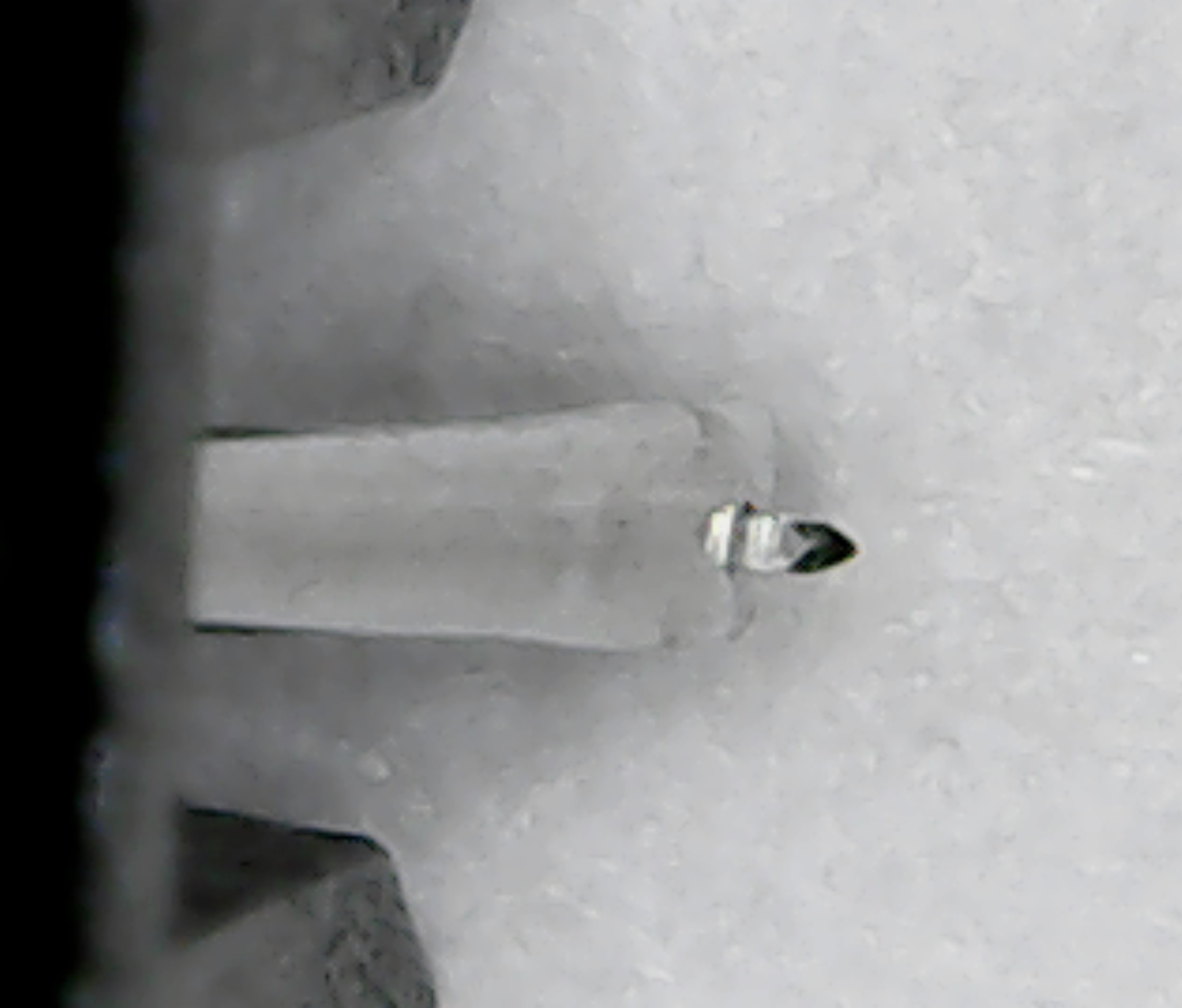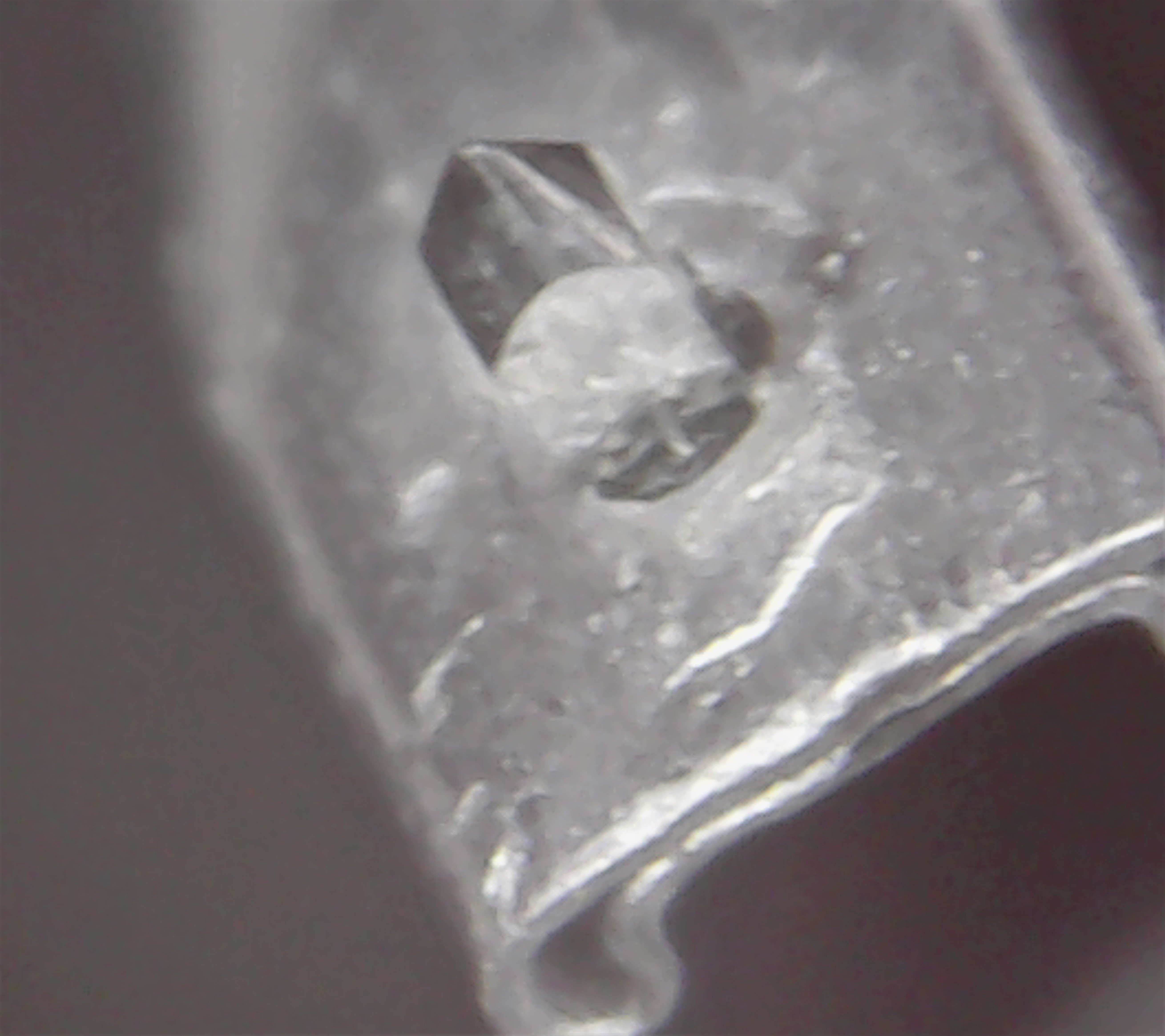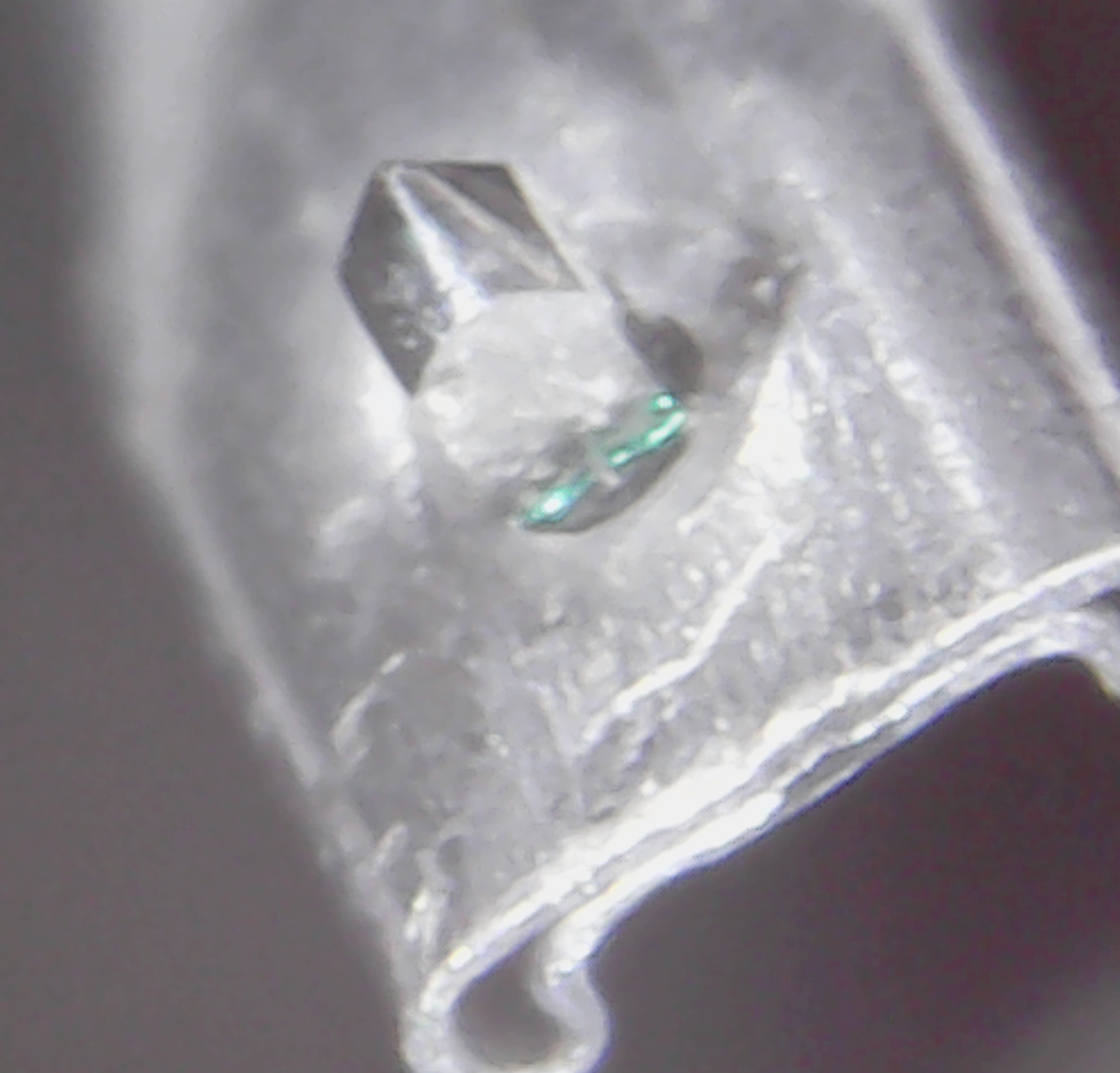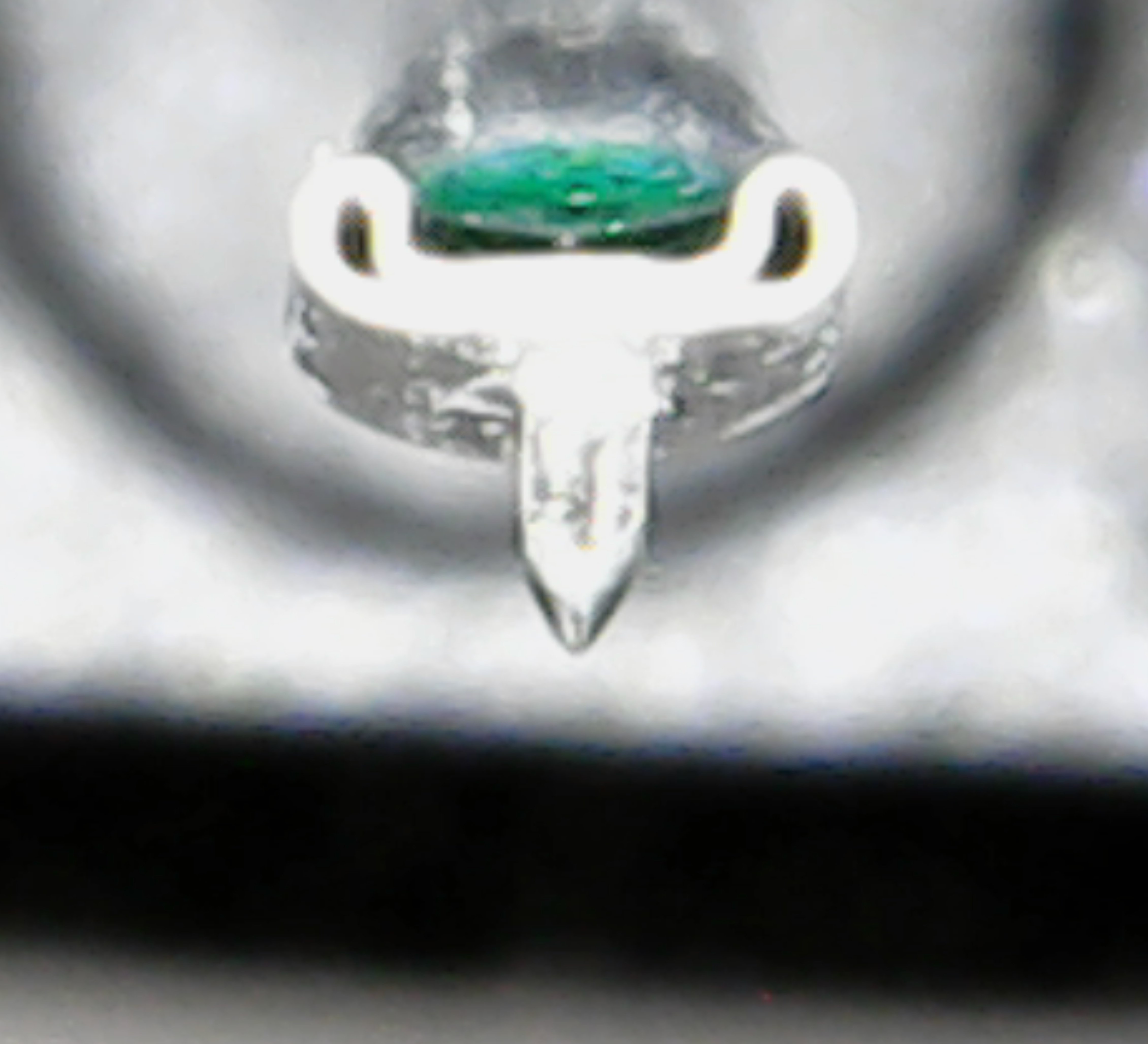You are using an out of date browser. It may not display this or other websites correctly.
You should upgrade or use an alternative browser.
You should upgrade or use an alternative browser.
Recommend me an inexpensive USB Microscope/Camera
- Thread starter misterc6
- Start date
JensenHealey
pfm Member
At my place of work we have an Aldi (or Lidl, not quite sure) unit in the lab. I just used it this morning to look at a tiny defect in something. It is getting on a bit and will only work on an old Win 7 computer - as does our FTIR machine. The microscope has 10x, 60x, 200x and a switchable light platform. Excellent pictures I got! So it seems to work, but you have to wait until these things come around again to buy one.
There seems to be a big choice on-line!
https://www.amazon.co.uk/s?k=usb+mi...9e2458fc&tag=bestreviewer1-21&ref=as_li_ss_tl
There seems to be a big choice on-line!
https://www.amazon.co.uk/s?k=usb+mi...9e2458fc&tag=bestreviewer1-21&ref=as_li_ss_tl
This site contains affiliate links for which pink fish media may be compensated.
misterc6
Wasted and wounded, it ain’t what the moon did
I took the plunge and bought one of these whilst they were a Lightning Deal on Amazon's sale for £16.15:
https://www.amazon.co.uk/gp/product/B07KQDQ4VR/?tag=pinkfishmedia-21
https://www.amazon.co.uk/gp/product/B07KQDQ4VR/?tag=pinkfishmedia-21
Last edited:
This site contains affiliate links for which pink fish media may be compensated.
John Channing
fruit box forever
I have one of these which was bought for a school project for my kids, it works brilliantly considering the price:
https://www.amazon.co.uk/gp/product/B074N3PR9P/?tag=pinkfishmedia-21
https://www.amazon.co.uk/gp/product/B074N3PR9P/?tag=pinkfishmedia-21
This site contains affiliate links for which pink fish media may be compensated.
Hook
Blackbeard's former bo'sun.
I have a Dino-Lite, and follow this process for setting SRA.
https://www.analogplanet.com/conten...icroscope-set-92-degree-stylus-rake-angle-sra
https://www.analogplanet.com/conten...tylus-rake-angle-using-digital-usb-microscope
https://www.analogplanet.com/conten...icroscope-set-92-degree-stylus-rake-angle-sra
https://www.analogplanet.com/conten...tylus-rake-angle-using-digital-usb-microscope
Mister C, some perfectly good suggestions above which I’m sure will give a reasonable image. I have assembled a more elaborate digital microscope which does an amazing job of looking at stylus detail, if a bit fiddly to get the scope into a position to focus on the stylus whist in situ. I mainly use the scope with a screen monitor to entaintain and inspire my grandkids. I built the system to look at invertebrate detail which can be both video or still photos using modular industrial sensors and scopes normally used for manufacturing quality control (electronics and micro circuits). Didn’t cost a fortune and I’m surprised how much I’ve used it for a variety of uses. If you are interested send me a pm and I’ll happily send you some links if you fancy a project!
Big Tabs
looking backwards, going forwards
I had a cheap USB microscope a few years ago, that gave up working.
Ordered one of these £17.99 from amazon
https://www.amazon.co.uk/dp/B06WD843ZM/?tag=pinkfishmedia-21
It takes digital images, took a bit of setting up, and I have used a vice to hold it in place.
The lighting takes some adjustment, and I added extra light. Also the background (white or black paper) makes a difference.
I will put some images up later/tomorrow of my unused ortofon 2m black stylus.
For the price, it is amazing.




for reference - this is okay for my needs.
note: I have not adjusted the images in any way, apart from cropping a small amount.
If I were to take longer, and adjust the lighting position etc, I think I could get better - but I have back ache, and my hand/arm is spasming. (add those to yesterdays mild injuries that still hurt... )
)
Ordered one of these £17.99 from amazon
https://www.amazon.co.uk/dp/B06WD843ZM/?tag=pinkfishmedia-21
It takes digital images, took a bit of setting up, and I have used a vice to hold it in place.
The lighting takes some adjustment, and I added extra light. Also the background (white or black paper) makes a difference.
I will put some images up later/tomorrow of my unused ortofon 2m black stylus.
For the price, it is amazing.




for reference - this is okay for my needs.
note: I have not adjusted the images in any way, apart from cropping a small amount.
If I were to take longer, and adjust the lighting position etc, I think I could get better - but I have back ache, and my hand/arm is spasming. (add those to yesterdays mild injuries that still hurt...
This site contains affiliate links for which pink fish media may be compensated.
Brucedgoose
pfm Member
I’m not sure you have enough magnification here to catch stylus wear early on. Can you tell us what the magnification is? Generally, you need about 400x to really see the flat spots developing on the sides of the stylus. Much less than that and it will be hard to notice. It also really helps to have very bright illumination, which, as you seem to know, can be hard to achieve. As I remember peering through ‘scopes at my styli years ago, I think they were significantly more magnified than what you have here.
Brucedgoose
pfm Member
Also just want to point out that the process of setting VTA/SRA does not require the same very high magnification that effective checking for stylus wear requires.
cj66
pfm Member
The ones linked to on Amazon, in previous posts, are available in these parts, closer to source, for approx. sick squid.
https://www.lazada.co.th/products/c...4m.searchlist.list.53.5bb45bd8l609tt&search=1
https://www.lazada.co.th/products/c...4m.searchlist.list.53.5bb45bd8l609tt&search=1
Big Tabs
looking backwards, going forwards
I’m not sure you have enough magnification here to catch stylus wear early on. Can you tell us what the magnification is? Generally, you need about 400x to really see the flat spots developing on the sides of the stylus. Much less than that and it will be hard to notice. It also really helps to have very bright illumination, which, as you seem to know, can be hard to achieve. As I remember peering through ‘scopes at my styli years ago, I think they were significantly more magnified than what you have here.
Up to 1000x magnification
memory can be a poor reference >
“I think they were significantly more magnified than what you have here...”
Brucedgoose
pfm Member
The photos posted are nowhere near 1000x. No need for memory on this- it’s obvious! When you work in the field of microscopy you do get to know about these things from experience, just like in any other profession. I was a microscope repairman at Technical Instrument Company in San Francisco way back in the ‘80s. But don’t listen to me. Find a good audio store that still supports analog and offers stylus inspection. Check out the scope they use and determine the magnification (that will be the eyepiece power times the objective power) used for stylus inspection. The scope is likely to be a Shure or, if they’re really on it, a Wild-Heerbrug and either will have 400x magnification available. The latter is what I used to use at “World of Sound” in San Francisco, an excellent, now defunct, audio shop. When viewing the stylus for wear, at 400x, the stylus tip will entirely fill the field of view. If you ‘re seeing the cantilever and the stylus’ attachment point in the field-of-view, as is the case with the posted photos, the magnification is insufficient.Up to 1000x magnification
memory can be a poor reference >
“I think they were significantly more magnified than what you have here...”

Big Tabs
looking backwards, going forwards
The photos posted are nowhere near 1000x. No need for memory on this- it’s obvious! When you work in the field of microscopy you do get to know about these things from experience, just like in any other profession. I was a microscope repairman at Technical Instrument Company in San Francisco way back in the ‘80s. But don’t listen to me. Find a good audio store that still supports analog and offers stylus inspection. Check out the scope they use and determine the magnification (that will be the eyepiece power times the objective power) used for stylus inspection. The scope is likely to be a Shure or, if they’re really on it, a Wild-Heerbrug and either will have 400x magnification available. The latter is what I used to use at “World of Sound” in San Francisco, an excellent, now defunct, audio shop. When viewing the stylus for wear, at 400x, the stylus tip will entirely fill the field of view. If you ‘re seeing the cantilever and the stylus’ attachment point in the field-of-view, as is the case with the posted photos, the magnification is insufficient.
as I said, your comments on 2 different threads are referring to the same usb microscopes.
In one thread you praise the scope, in the other thread you are negative. ?!?!
You do not seem to be able to reply to that point.
Brucedgoose
pfm Member
I relied there and I’ll reply here. While the scope you’re referring to may be capable of adequate magnification, the *photos* themselves were not taken with high enough magnification to be useful for checking stylus wear. Just because the scope has that capability doesn’t mean every thing you look at through it is at high magnification. It has to be adjusted properly. The photos are good, but they won’t reveal damage to the stylus, which can be on the order of 10 or 20 microns, which is a very small spot. A scope that is adequately magnifying your stylus will typically not show any significant portion of the cantilever because the tip will entirely fill the field of view.as I said, your comments on 2 different threads are referring to the same usb microscopes.
In one thread you praise the scope, in the other thread you are negative. ?!?!
You do not seem to be able to reply to that point.
Have you ever looked at a stylus with magnification that you *know* to be 400x?
Big Tabs
looking backwards, going forwards
I relied there and I’ll reply here. While the scope you’re referring to may be capable of adequate magnification, the *photos* themselves were not taken with high enough magnification to be useful for checking stylus wear. Just because the scope has that capability doesn’t mean every thing you look at through it is at high magnification. It has to be adjusted properly. The photos are good, but they won’t reveal damage to the stylus, which can be on the order of 10 or 20 microns, which is a very small spot. A scope that is adequately magnifying your stylus will typically not show any significant portion of the cantilever because the tip will entirely fill the field of view.
Have you ever looked at a stylus with magnification that you *know* to be 400x?
I refer you to my previous comedy answer. Case closed.
Sue Pertwee-Tyr
Accuphase all the way down
Tabs, I think you might be missing his point. The scope itself seems fine, but the magnification you appear to have used doesn’t seem to use all the capabilities of the scope, and thus isn’t showing up what you might want to look for. I didn’t read it as criticism of the scope, nor your photographs, but rather an observation that you can probably do better from the same scope, if you adjust the magnification setting.I refer you to my previous comedy answer. Case closed.
Mind you, you might need to apply more lighting, if you do.
Brucedgoose
pfm Member
Yes, thank-you.Tabs, I think you might be missing his point. The scope itself seems fine, but the magnification you appear to have used doesn’t seem to use all the capabilities of the scope, and thus isn’t showing up what you might want to look for. I didn’t read it as criticism of the scope, nor your photographs, but rather an observation that you can probably do better from the same scope, if you adjust the magnification setting.
Mind you, you might need to apply more lighting, if you do.
worked in the audio industry for decades starting in the late 60's -except for when the Shure engineers showed up with their equipment for cart clinics -NONE of the stores I worked in (total of 5 ) had anywhere near a adequate stylus inspection microscope. And the vast majority of styli I was asked to examine needed nothing more than unassisted normal vision to determine that the bent or mangled stylus assembly was kaput. A friend of mine used to insist on buying any used carts I had -some of these were rare enough that I'd notice they would come back into use on a customer's turntable (small city -tiny audio market). He said he checked these with his Shure stylus inspection microscope - this was puzzling ? Decades down the pike -a couple of months before his store closed - I finally saw his Shure stylus inspection microscope. It was a Shure -very likely older than he was -maybe ? older than I am ? fixed power of 40X (maybe 60X?) - about all that would allow you to see was crud on the stylus and that it did or didn't still have a diamond attached to the stylus bar. This Shure stylus inspection microscope must have dated back to the 78 era ? Certainly no chance that it would be able to see the contact patch on a stylus tip. Explained a lot.
Big Tabs
looking backwards, going forwards
Tabs, I think you might be missing his point. The scope itself seems fine, but the magnification you appear to have used doesn’t seem to use all the capabilities of the scope, and thus isn’t showing up what you might want to look for. I didn’t read it as criticism of the scope, nor your photographs, but rather an observation that you can probably do better from the same scope, if you adjust the magnification setting.
Mind you, you might need to apply more lighting, if you do.
The title of this thread is >
Recommend me an inexpensive USB Microscope/Camera
which is what I have done.
The images are the first go with a <£20 usb microscope.
I think @Brucedgoose has a more expensive option in mind, and has missed the point.
Maybe Mr.Goose could put some images up, rather than explaining how knowledgeable he is?
Until someone actually puts some images up of their efforts, then I maintain I am not missing the point, but making at least some effort.
I think the second and third images that I posted aren’t too bad.
remember > “inexpensive USB microscope/camera...”

